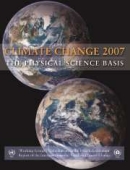“All indications are that we should be alarmed about the future of sea level rise and should be doing something about it now.” Orrin Pilkey and Rob Young, eminent coastal scientists, wrote their book The Rising Sea to provide substance for that alarm and to offer suggestions as to how we can plan ahead to reduce the severity of the impact of the rising sea.
The authors begin by reminding us that it’s not a distant prospect. They describe what is happening to Alaskan shoreline villages such as Kivalina and Shishmaref, atoll nations such as Kiribati, the Maldives, the Marshall Islands, Tokelau and Tuvalu, and the city of Venice, places already grappling with rising sea level.
Rising tide gauge data and an increase in coastal erosion along many of the planet’s shorelines provide clear evidence of the rising sea and of the warming of the planet. Not that the authors are simplistic about this. They recognise and discuss the function of tectonic changes and additions to or subtractions from the weight of the crust. But there is plenty of evidence of an increase in the volume of water in the oceans, accelerating in response to global warming. Easier evidence to assemble, they note, than the measurement of global temperature trends.
Predictions of rise in the 21st century are dependent on what happens in the Greenland and West Antarctic ice sheets, an area which the IPCC 2007 report felt unable to take into its compass, other than by commenting that the contribution from both of these ice sheets may be much larger than previously assumed. Pilkey and Young do not offer predictions, but they note that some organisations in the US have begun to make their own, quoting for example a committee in one of Florida’s counties which speaks of a minimum of 1 to 1.5 metres. They further note the work of University of Colorado scientist Tad Pfeffer and colleagues who argued in a 2008 paper in Science for a range between 0.9 and 2.0 metres, and they describe Hansen’s understanding that the non-linear response of the ice sheets could mean a level higher than that, possibly even as much as 5 metres. Shoreline retreat, of great importance to human society, is difficult to predict. It’s not a simple or uniform matter and they discuss some of the variable regional factors which have to be taken into consideration in any assessments. Their conclusion is that coastal management and planning should assume ice sheet disintegration will continue and a 2 metre sea level rise by 2100 should be reckoned with. They describe this as a cautious and conservative approach. All rubbish, of course, to the noisy minority of opinion they address in a chapter on what they call the sea of denial.
The later sections of the book are concerned with the impacts of rising sea level. First on natural ecosystems. The coastal wetlands and coral reef ecosystems have long migrated back and forth along with changing sea level and attendant shoreline movement. But they haven’t before had to simultaneously cope with massive changes in the physical environment cause by human activities. Their future is unprecedented. The biggest global obstacle to salt marsh movement, for instance, is shoreline development and agriculture. There is often little room for them to expand inland. Many will disappear, a loss both environmental and economic as yet recognised by few governments. Mangrove areas have already been significantly reduced globally, most recently by clearing for agriculture and aquaculture. Poverty in the developing world leveraged by greed in the developed world is the driver of their destruction. Coral reefs are threatened by more factors than sea level rise, but their need for sunlight means that they must either grow upwards or migrate to shallower water to survive rising seas.
The authors then turn to the impact of sea level rise on humans. The principal nation-scale impacts are likely to include loss of land, flooding, increased storm surge vulnerability, accelerated erosion, increased salinization, loss of biodiversity, loss of aquaculture and fishery, damage to marine infrastructure, and tourist decline. The countries with the biggest problems are the atoll nations; deltaic countries such as Egypt, the Nethlerlands, Bangladesh, Vietnam and Myanmar; and countries with large low-lying, heavily developed coastal plains such as the US, Brazil and China. (As an aside I note that the severe effects of climate change on the US and China may be our best hope that they will act decisively to reduce emissions, once, that is, denialism loses its remaining traction among their lawmakers.) The book details the specifics faced by some of those countries. In Vietnam, for example, a one metre sea level rise will displace more than a tenth of the nation’s people, gobble up 12 percent of its land area, and reduce food output by 12 percent. Turning to cities the book notes an OECD study ranking the most vulnerable cities in the world as measured by susceptibility of property to flooding. Half of the top ten are American, headed by Miami.
A closer look at the Mississippi delta forms the substance of a chapter. The authors describe various proposals to restore and protect the Louisiana coast and are sympathetic to some of them, such as wetland restoration. But the vast and costly restoration effort now being sold to the residents of Louisiana and the rest of the US they consider misleading and dangerous. Conditions in southern Louisiana are likely only to get worse no matter how much money is spent. Global sea level rise is coming. Coastal managers need to begin developing a plan to relocate towns in the lower delta, in ways which will keep the communities together. The delta culture may be preserved, but not in place.
The final chapter is titled Sounding Retreat. It focuses on how Western countries need to respond to the landward movement of the shoreline. The authors identify three responses: abandonment of the beachfront and relocation of all buildings and infrastructure away from the retreating shoreline; protection of the shoreline with seawalls, groins, and suchlike; formation of an artificial beach by bringing in new sand. All are expensive, but the latter two are temporary and suitable only for small rises in sea level. (No problem for Bjorn Lomborg who estimates a 30 centimetre rise.) The implications of each of these approaches are discussed in some detail with reference to specific examples. Opposition to relocation often comes from those with vested interests, and Florida extraordinarily still permits the construction of high rise shoreline buildings, taking over the financial obligation since insurance companies have backed away from insuring coastal properties. But the authors consider that in many cases relocation of beachfront communities will be the most effective solution, especially in view of the tremendous effort that will be needed to protect exposed cities.
We’re for it, the authors warn. Reduction of emissions will not halt sea level rise in the short term. If we’re wise we’ll plan ahead. The constructive discussions and examples in their easily understood book will assist those who want to get an initial understanding both of the possible magnitude of what faces us and of the kind of measures we will need to take to manage it with the least distress. The book is well worth attention.


 At risk of further accusation of being over-impressed by politicians’ words I welcome what Ed Miliband is reported as saying in today’s leading
At risk of further accusation of being over-impressed by politicians’ words I welcome what Ed Miliband is reported as saying in today’s leading  “If it’s that warm, how come it’s so darned cold?” is the heading James Hansen has given to a recently finalised
“If it’s that warm, how come it’s so darned cold?” is the heading James Hansen has given to a recently finalised  A couple of days ago one of Hot Topic’s denialist commenters triumphantly waved a UK Sunday Times article claiming that the IPCC had erred not only in relation to the likely rate of melting of Himalayan glaciers but also in linking global warming to an increase in the number and severity of natural disasters.
A couple of days ago one of Hot Topic’s denialist commenters triumphantly waved a UK Sunday Times article claiming that the IPCC had erred not only in relation to the likely rate of melting of Himalayan glaciers but also in linking global warming to an increase in the number and severity of natural disasters. “This is a century in which we will recognise that living within your means can no longer just be about money, but also must be about first living within your carbon means and second living within the natural world’s ability to support humankind over issues like fishing and deforestation.”
“This is a century in which we will recognise that living within your means can no longer just be about money, but also must be about first living within your carbon means and second living within the natural world’s ability to support humankind over issues like fishing and deforestation.”